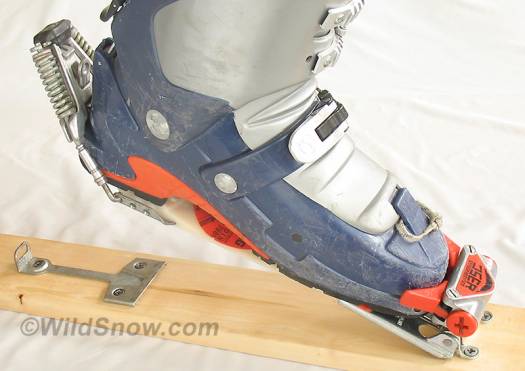This is one of our favorite collection pieces. The Iser was quite prevalent in the 1970s era. While heavy at a whooping 32 ounces a pair, the binding’s simple engineering was appealing.
Vertical heel release is provided by the classic Marker heel unit seen on so many touring bindings of this era. Unlike other rigid plate/frame designs, the Iser uses a flexible plastic plate to connect toe and heel. Heel latchdown is accomplished by bending the plate upwards and inserting a tab in a catch (see photo below), an ingenious way of solving a sometimes complex engineering problem.
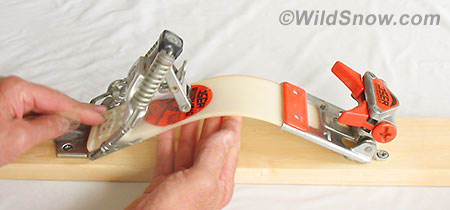
Heel latchdown is done by bending the plastic plate up in the middle, thus allowing a tab on the rear of the binding to slip under a catch.
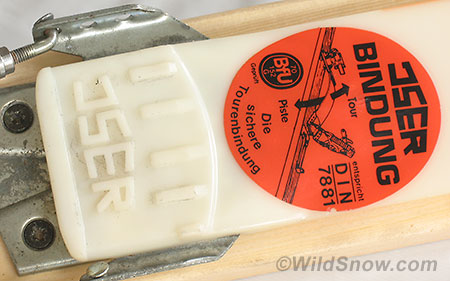
Rear area of plastic plate included a molded logo, as well as a sticker showing how to convert the binding between ‘tour’ and ‘piste.’
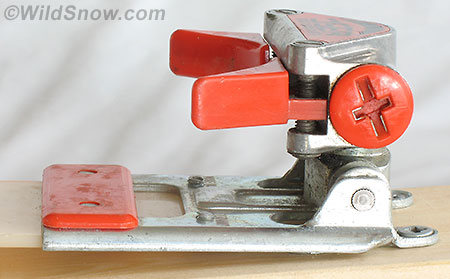
Toe unit details.
Toe height adjustment is easily done by rotating the vertical threaded rods with a screw driver. Lateral release is a cam and spring system similar to most other release binding of this era, with tension adjusted by rotating the red cap with the crossed slots. What’s interesting about the toe release is that the springs are oriented totally perpendicular to the for/aft axis of the binding, thus eliminating bulk on the front of the toe unit that would obstruct movement of the binding in touring mode. This problem of providing release but not obstructing movement is an engineering dilemma common to most randonnee bindings and has been solved in numerous ways.
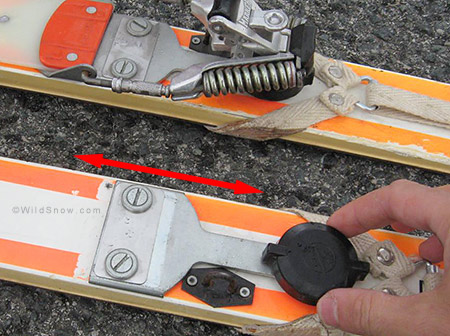
This is another model of the binding, probably later. The heel latch worked by sliding fore and aft, controlled by the rotating dial on the right. Photo thanks to Raul Tapia.
Thanks goes to Frank Mattheus for his kind donation of these bindings to the collection.

Iser binding thumbnail.

